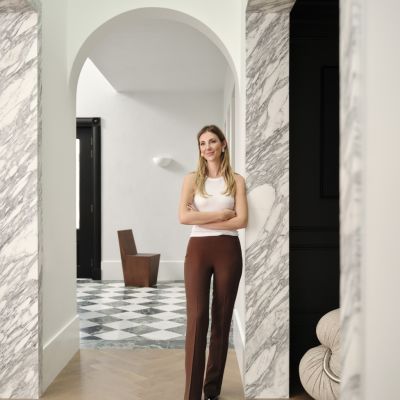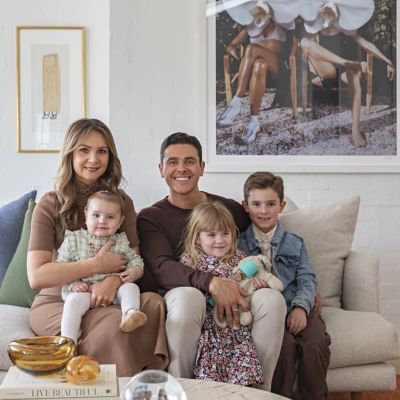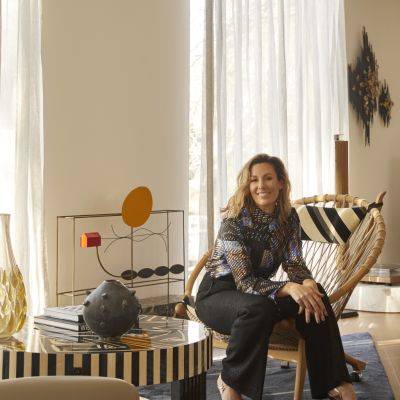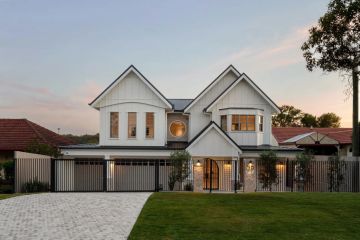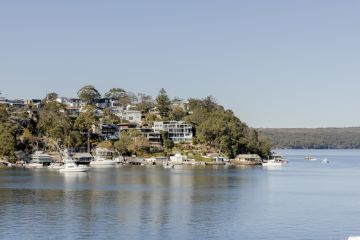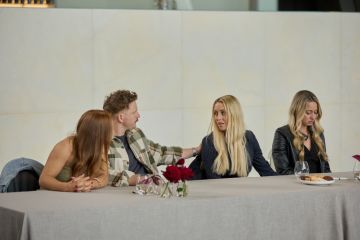The Melbourne artist bringing a modern twist to the ancient art of stained glass
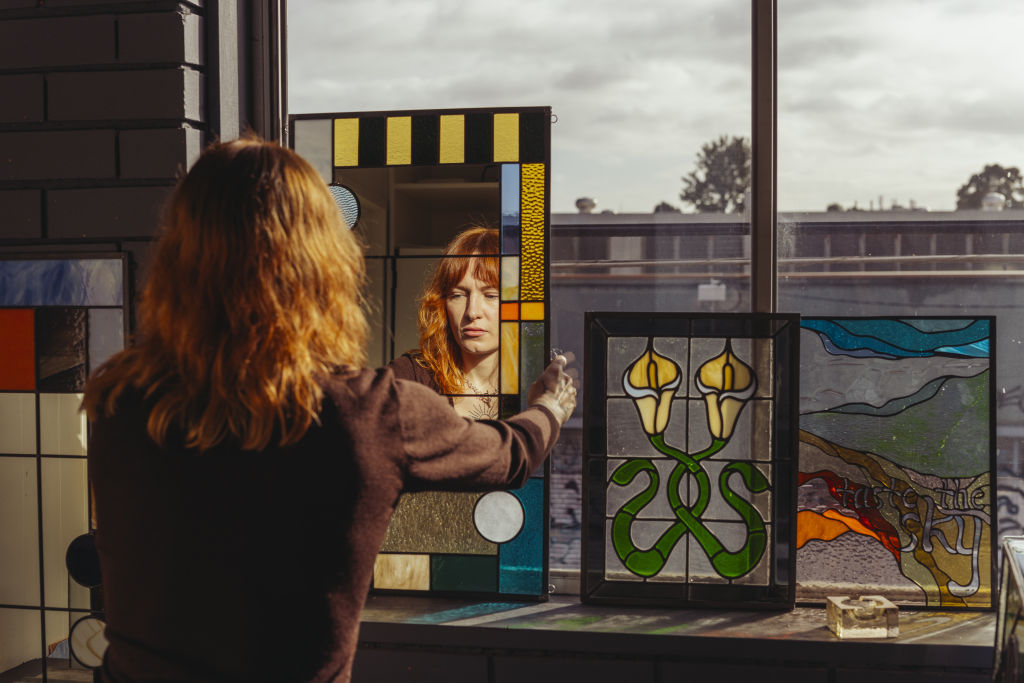
Where do you go looking for stained glass? Elaborate church windows, grand public buildings, the doorway to a stately Federation home? These are the traditional places for coloured glass panes, but to see how the centuries-old craft is being revitalised for a young crowd, it’s best to look on Instagram.
It’s there that most people first encounter Poppy Templeton’s work: geometric, Mondrian-esque mirrors and bold, nature-inspired panels (along with the odd stained-glass bikini). Within a few short years, Templeton’s one-woman business Duck Ragu has garnered enough buzz to bring in a steady stream of custom orders. That’s pretty impressive for a niche craft she picked up on a whim in 2021, when she enrolled in a leadlighting course.
Now Templeton’s colourful designs bring joy to quotidian settings. From her studio in Brunswick, she creates bold works that riff on nature, geometry and, occasionally, David Lynch movies.
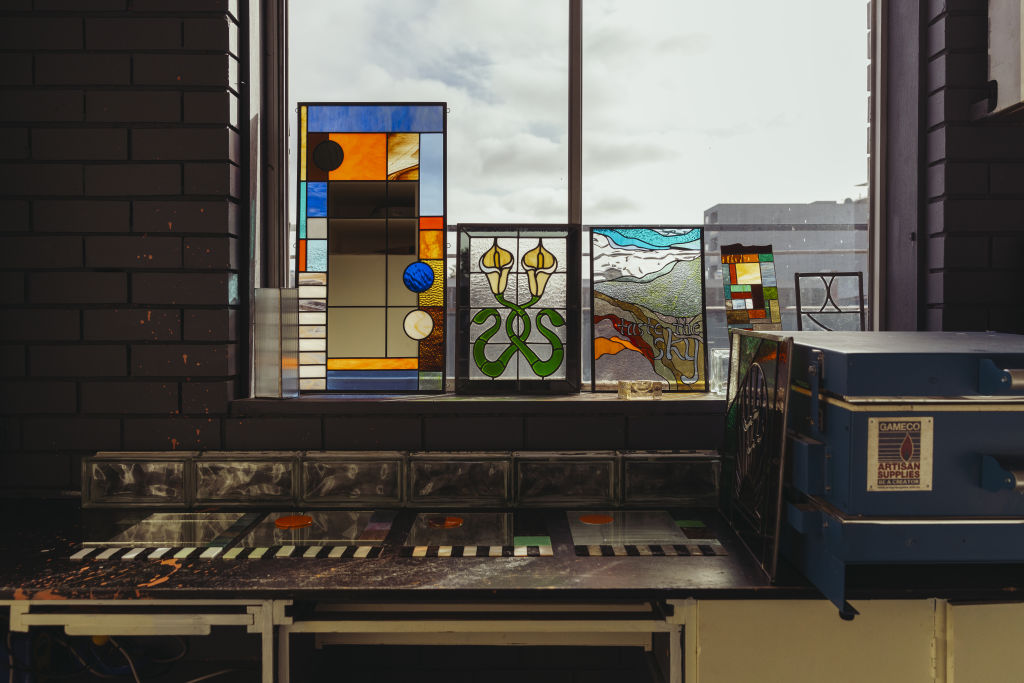
Few have the means to install a traditional stained-glass feature in their home, but Duck Ragu fans hang her creations on walls, just as they would a painting or a print. They prop her mirrors up against a bathroom window or place them atop a share house mantelpiece.
“A lot of my work isn’t necessarily meant to be put in a window, but I still care about how light interacts with the glass,” Templeton says. “It might take me weeks to decide on the glass texture, because I want the light to refract on the wall in a certain way.”
Making leadlights remains a decidedly old-school process today: everything is done by hand, in painstaking fashion. Glass sheets are individually scored and cut, each small piece taken and ground down into shape before being assembled and fitted together with lead, a bit like a glass collage.
Unsurprisingly, the materials can prove hazardous. Makers have to be strict about PPE and ventilation (inhaling dust from both glass and lead is damaging). And for Templeton, gloves are a must: a gnarly cut can put her out of work for a week. “I’ve seen bone before,” she says of one particularly bloody instance.
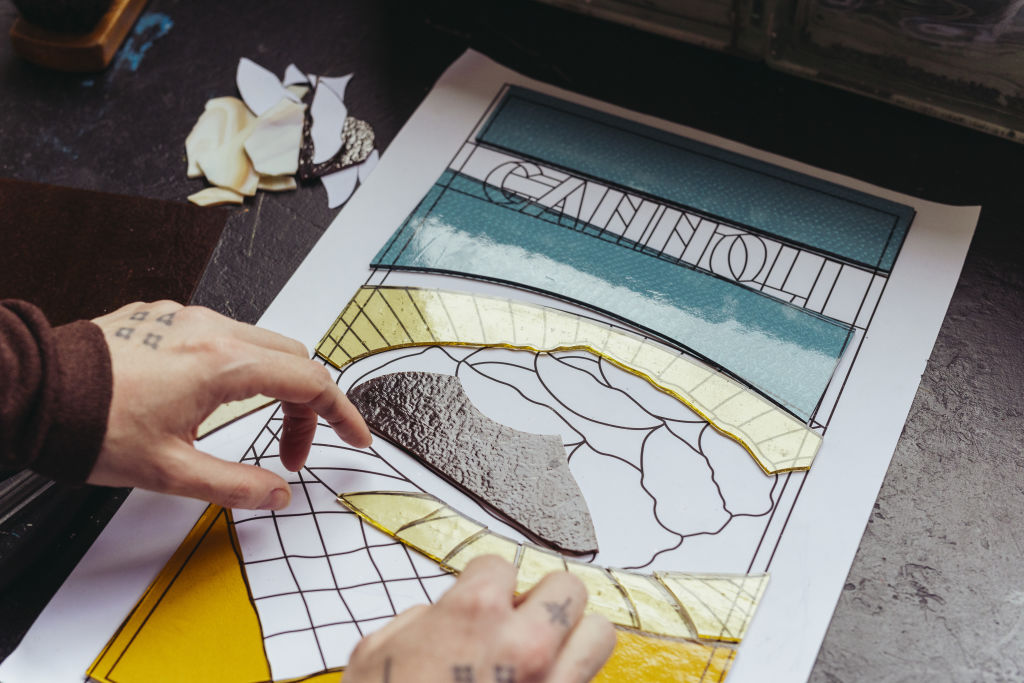
Depending on the size and design of a work, Templeton uses either the leadlighting method or the Tiffany technique (named after American designer Louis Comfort Tiffany, creator of the Tiffany lamp). She prefers the former for heftier creations – lengths of pliable H-shaped lead came are wrapped around the glass cut-outs and the joints soldered together, creating bold black lines.
For more delicate, detailed works, Templeton opts for the Tiffany technique, where glass pieces are wrapped in shimmering copper foil before being soldered together.
For Templeton, designing and ideating is just as rewarding as making. “I want to do something that hasn’t been made in glass before,” she explains.
“I try not to look at too much other stained glass because I don’t want to be inspired by something that already exists. If I’m making something with words, I’ll end up researching ’70s Italian magazine adverts and trying to make something more art based.”
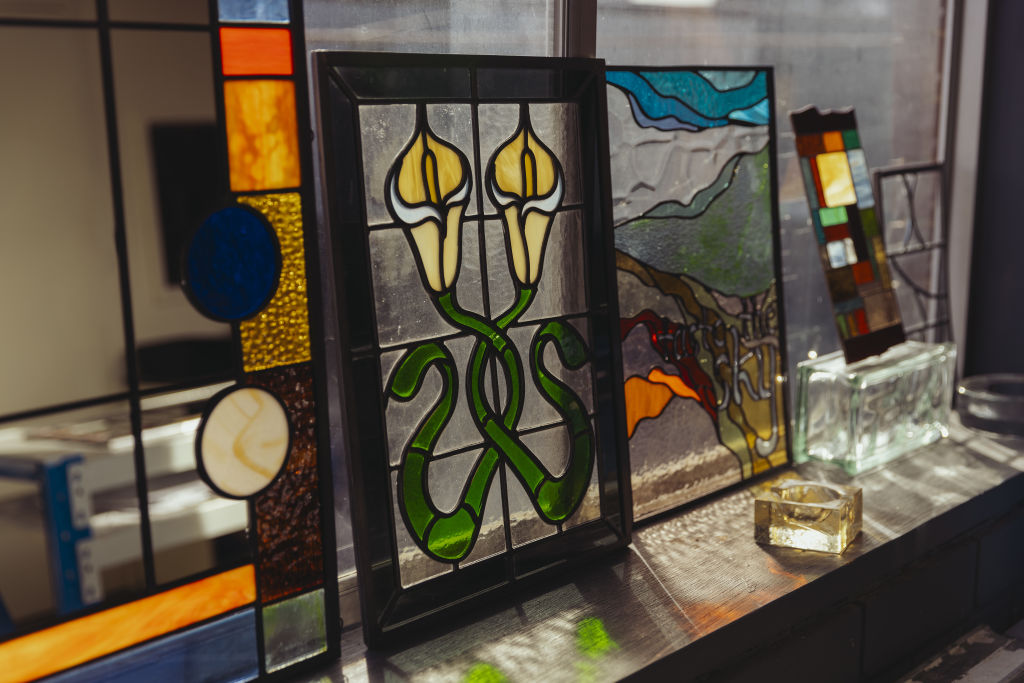
The only requests she knocks back are those to remake a broken window, or from clients who “tell me exactly what to do”.
Mostly, Templeton’s door stays open to weird and wonderful commissions, especially ones with a sentimental bent. One brief came in the form of a personal essay; another client asked for glass the colour of the sea in a particular spot off New South Wales.
Her favourite commission to date – an abstract panel with a blue hand surrounded by pearlescent orbs – was made for a nail salon. “They sent me a bunch of stills from David Lynch films that I studied,” she says. “I love research and take it very seriously.”
Templeton is just one of a handful of young Melbourne artists making leadlights cool again. Her peers include self-taught artist Nadine Keegan, Jodie-Mae Holm of Lead Levels and Eloise McCullough of Fools Glass. Like Templeton, Holm and McCullough are graduates of Melbourne Polytechnic’s glass and glazing certificates, which emphasise both commercial work and artistic practice. Together, their contemporary aesthetic is turning a new audience’s attention to an old practice.
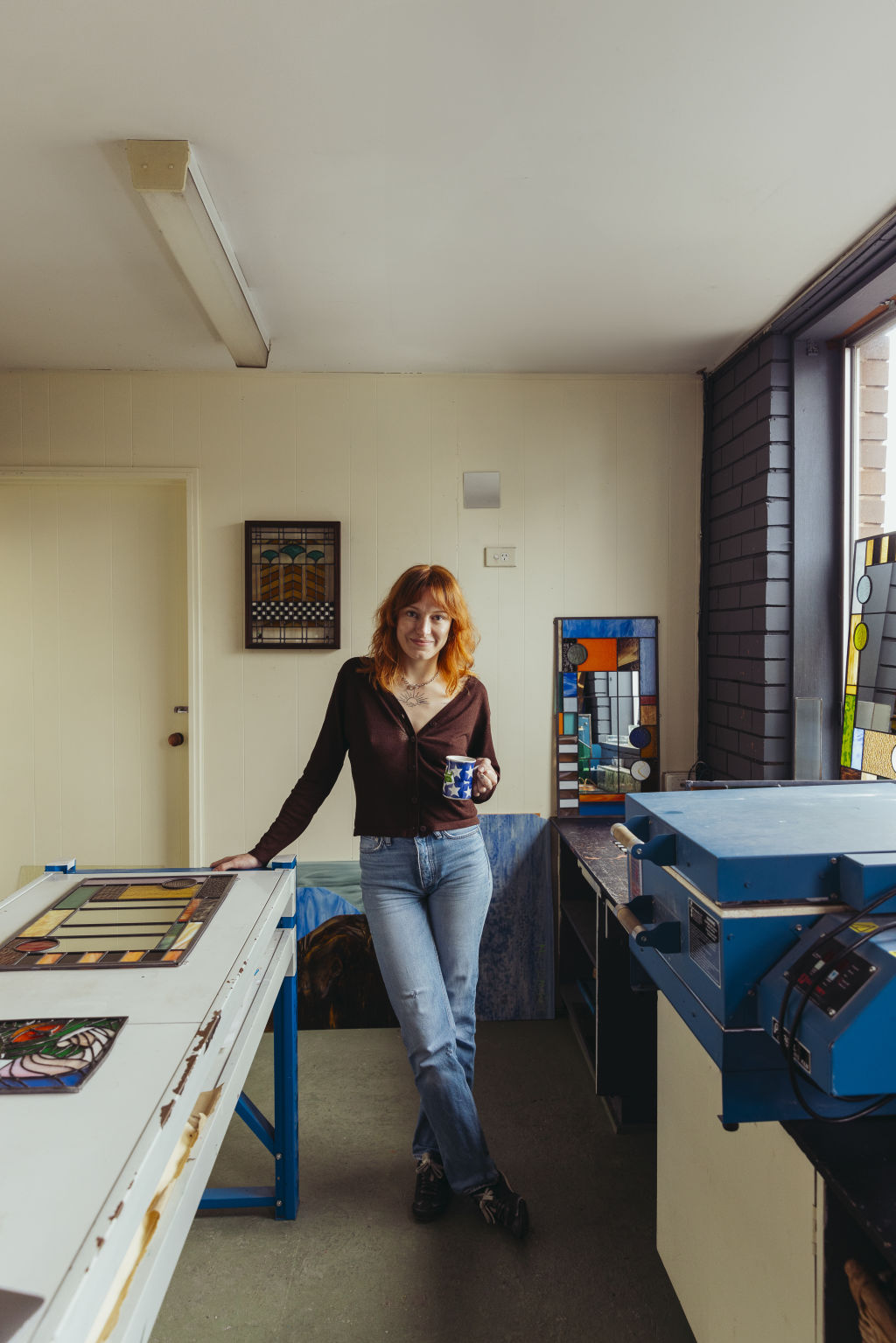
This recent spike in young leadlighters can be traced to Donna Kennedy. After running her own business for 20 years, Kennedy witnessed the trade shrink dramatically: as an antidote, she set up her not-for-profit Glaas Inc before eventually spearheading the course at Melbourne Polytechnic, which launched in 2020.
“Back in the ’80s, there were about 60 reasonable-sized studios in Melbourne,” Kennedy explains. “Then by the time we hit the early 2000s, we went down to about less than 10.” Conservation was one concern – who would repair the church windows and myriad traditional works? But more importantly, Kennedy saw an opportunity for leadlighting to evolve.
“Leadlighting and stained glass goes in cycles – it has since the 1880s – and in the 2000s, I believe it died off because it was perceived as a period-style decoration. But there’s a real energy around it this time that will keep it going. I think many brilliant creatives are running with it, looking at it differently and realising its potential. You can create an accessible product which anyone can have in their home like Poppy’s done, or you can work on large-scale architectural pieces. Working with glass is like magic.”
There may be a marked age gap between established business owners (many of whom are at retirement age) and young upstarts, but the community is small enough for both generations to cross paths and share skills.
“I had this funny moment when I went into an old-school leadlighting studio a few weeks ago, and one of the old guys knew who I was,” Templeton says. “He knew me as ‘The one making leadlights on Instagram’. I was like, ‘Oh my god!’ He was very sweet and complimentary.”
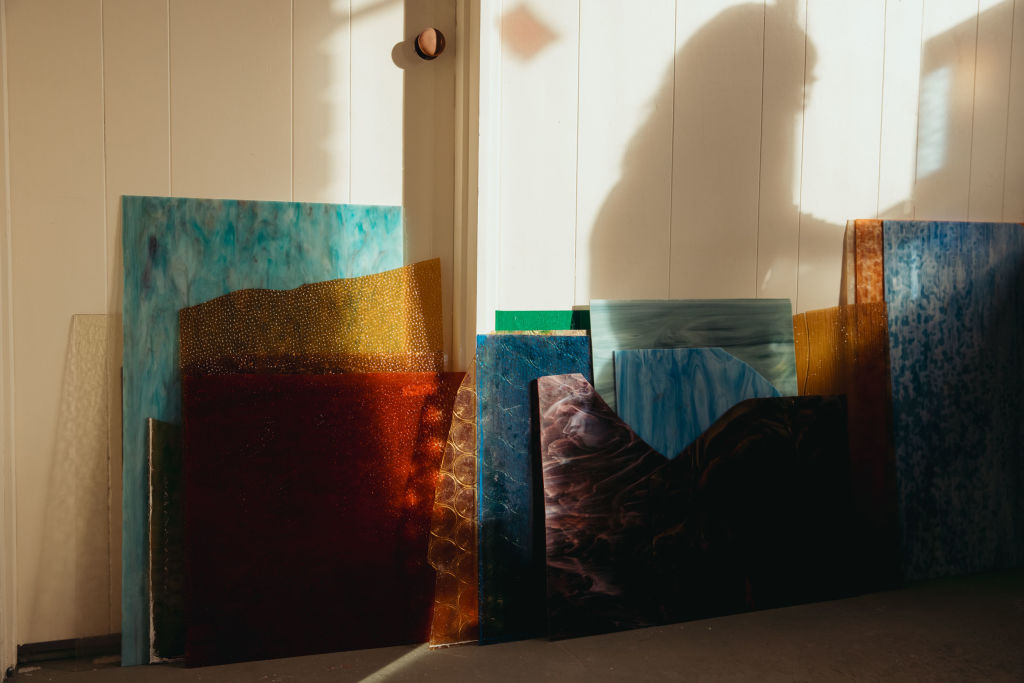
Templeton’s latest sale was to none other than her mum, who purchased a 75-centimetre square of ruby red tones, the artist’s biggest piece to date. In future, it’ll be installed as a window at her mum’s place. It’s a full circle moment for Templeton, who grew up marvelling at her mother’s leadlights in the family home. “I just thought it was so cool that she did a course in the ’80s,” she says. “Mum’s only held on to two of her pieces, and I think they’re better than anything I’ve ever made.”
While Templeton’s ultimate dream is to make large-scale architectural windows for a grand building, her next goal is slightly more modest. “I’ve decided that I really love doing shop signs,” she says. “It gives me the most amount of happiness.”
She’s also in the midst of moving to a combined work-home studio to better facilitate her all-hours creative urges. “It’s what I do for work, but it’s also my hobby. I know in some people’s view it’s not a healthy way to put up a boundary, but I’ll get home and be like, ‘I wish I could go make stuff.’ I’m just obsessed with glass.”
Additional reporting by Sanam Goodman
This article first appeared in Domain Review, in partnership with Broadsheet.
We recommend
We thought you might like
States
Capital Cities
Capital Cities - Rentals
Popular Areas
Allhomes
More
